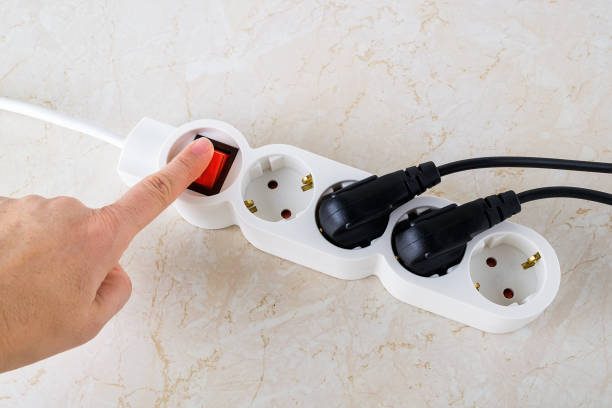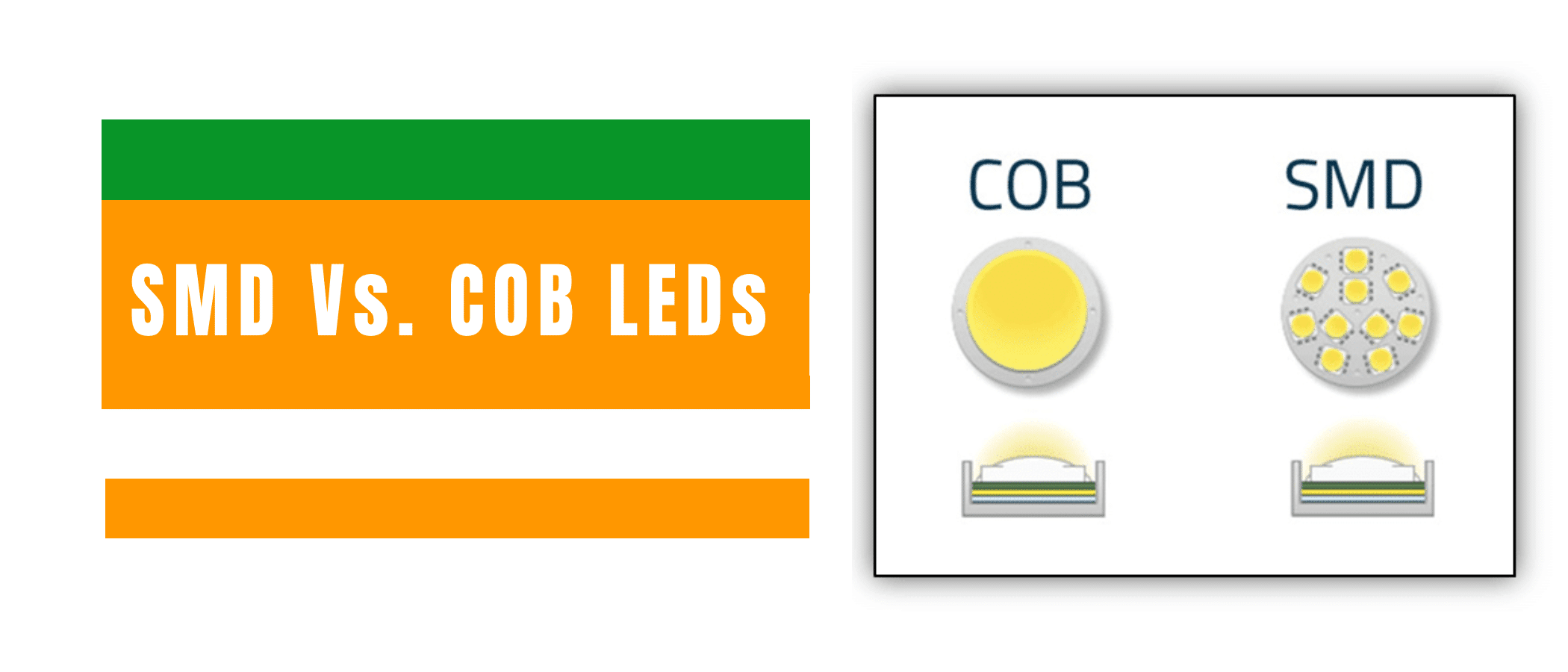
Explore common reasons why LED lights won’t turn on, from faulty wiring and incorrect installations to dead bulbs and power […]

SMD LED Light stands for “Surface-Mount-Device,” which is a Light-Emitting-Diode. It is a particular type of LED that is known and differentiated not only based on its physical dimensions, but also for having a 3-in-1 encapsulation. That is to say, an SMD LED integrates three colors all at once: Red (R), Green (G), and Blue (B).
As the picture here shows in detail, the SMD LED Lights are rectangular in shape and consist of the following specific elements:
The common type of SMD LED Lights consists of three main cells. We usually refer to them as an SMD RGB LED Light, indicating the three primary colors: Red, Green, and Blue. For each color, there is an anode side (+) and a cathode side (-), as shown in the image below.
It is important to mention that the manufacturing of these SMD LED specifications differs from other types of similar SMD LED Lights available out there. The SMD LED Light that we have here is the typical type. It has an anode and cathode type of contact for each luminescent element.
There are specific characteristics that are unique to the SMD LED lights:
Another important feature to highlight, manufacturers have worked on reducing the prices of SMD LED Lights in the global market. Besides, they’re focussing on enhancing its luminosity, size, shape, and usage possibilities.
You can find SMD LEDs everywhere: street lights, bikes, cars, home, and office lighting, smartphones, and televisions. Thus, as shown below, there are different types of SMD LED Lights to be used in various ways. They come in different shapes and sizes, to increase functionality as demonstrated.
These two most common types of SMD LEDs are the 3528 and the 5050. They are the most requested, sold, and used SMD LED Lights around the world today. To conclude, it is obvious enough to deduce the remarkable functionality that these SMD LED Lights to bring to the table.
If you are considering using a really interesting LED light in your house, don’t think twice about these SMD LED Lights. You won’t regret it choosing them for your home. However, is there any competition from other popular LED types out there; for example, COM LED Lights? Good question! Keep on reading below to find out the answer to this interesting question.
A COB LED Light is one of the most recent advancements in LED technology in the world right now. It represents the next step forward in terms of energy-efficient lighting.
COB stands for “Chip on Board”, and COB chips, like SMD chips, have one or more diodes on the chip surface.
COB chips often have nine or more diodes (while SMD LEDs appear to have a collection of diodes).
Regardless of how many diodes are present, COB LED lights are built together to have a single special circuit with a few connections. Because of their simple circuit, COB LED lights resemble a panel.
These lights, unlike the SMDs, can’t be utilized to make color-changing bulbs or illumination. This is because they only have one circuit and two contacts, whereas color-changing effects require numerous channels. As a result, COB LED lights are effective at giving only one hue of light, so they are limited in their versatility. However, COB lights have higher heat efficiency and lumen-per-watt ratios.
This is due to the COB LED lights’ design as well as the COB chip’s cooling substrate.
As you can see here below, these are some of the major COB LED types along with their special characteristics in the market today:
COB LED lights present a major competition due to their progressive efficiency and considerable lifespan in comparison to other existing LED types in the market right now.
Also, they are applicable and used in high-quality flashes in cameras, bulbs, and other applications.
All in all, COB LED lights are another recommended product that you can opt for in today’s market.
Both SMD and COB LED lights are efficient, practical, desired, and highly recommended in today’s market.
However, each LED has got its specific characteristics.
Thus, we are going to shed some light on particular similarities as well as differences between these LEDs.
Though SMD and COB LEDs may seem different from both the inside and the outside, they are very similar in a few ways.
Here are some interesting similarities between SMD and COB LEDs for you to keep in mind:
Here are some remarkable advantages that both SMD and COB LEDs do have in common:
2. Compared to traditional LEDs still available in the market, SMD and COB LED lights prove to be more affordable and longer-lasting than usual LEDs.
3. Both SMD and COB LEDs are considered to be highly efficient in producing bright luminous light that does not consume a lot of power.
Thus, in almost every way, modern LEDs, whether they be SMD or COB, are preferred over conventional and traditionally used LED lights.
Though both SMD and COB LED lights have much in common as both come under advanced technology, still there are some differences.
It is obvious enough to deduce that there are pros and cons to everything. This includes advanced technological devices and creations which help us evolve in building a better civilization.
Here are some disadvantages of these LEDs for you to take into consideration:
2. Both LEDs are the best that there is in the market. So, their prices are not the cheapest, nor are they consistent.
3. You must constantly check and correctly maintain both LEDs to avoid any complications happening.
4. They produce remarkable bright lighting around the house. Still, the color of the light emitted from both LEDs may change over time and thus require replacement.
5. Both LEDs need a certain voltage supply for best lighting performance.
6. Before installation, you need to have a stable power source that could supply both SMD and COB LEDs.
With all of that said, both of these LEDs add a noticeable effect to our indoor interior architecture.
It is evident enough to point out that both SMD and COB LED lights are among the best LEDs out there in the market today for most applications.
Both LEDs are effective, last longer than traditional LEDs, are energy-efficient, and add a creative aspect to our understanding of domestic decoration.
In a nutshell, there are always interesting advantages that such technology brings to the table.
Therefore, one cannot help but appreciate such technology and hope for its constant improvement to have the best experience that such technology could give us shortly.
We hope that you find this article interesting. It is enough to help you understand the difference between SMD and COB LEDs. Moreover, it will widen your vision on the importance of knowing the new technological products available in the market.